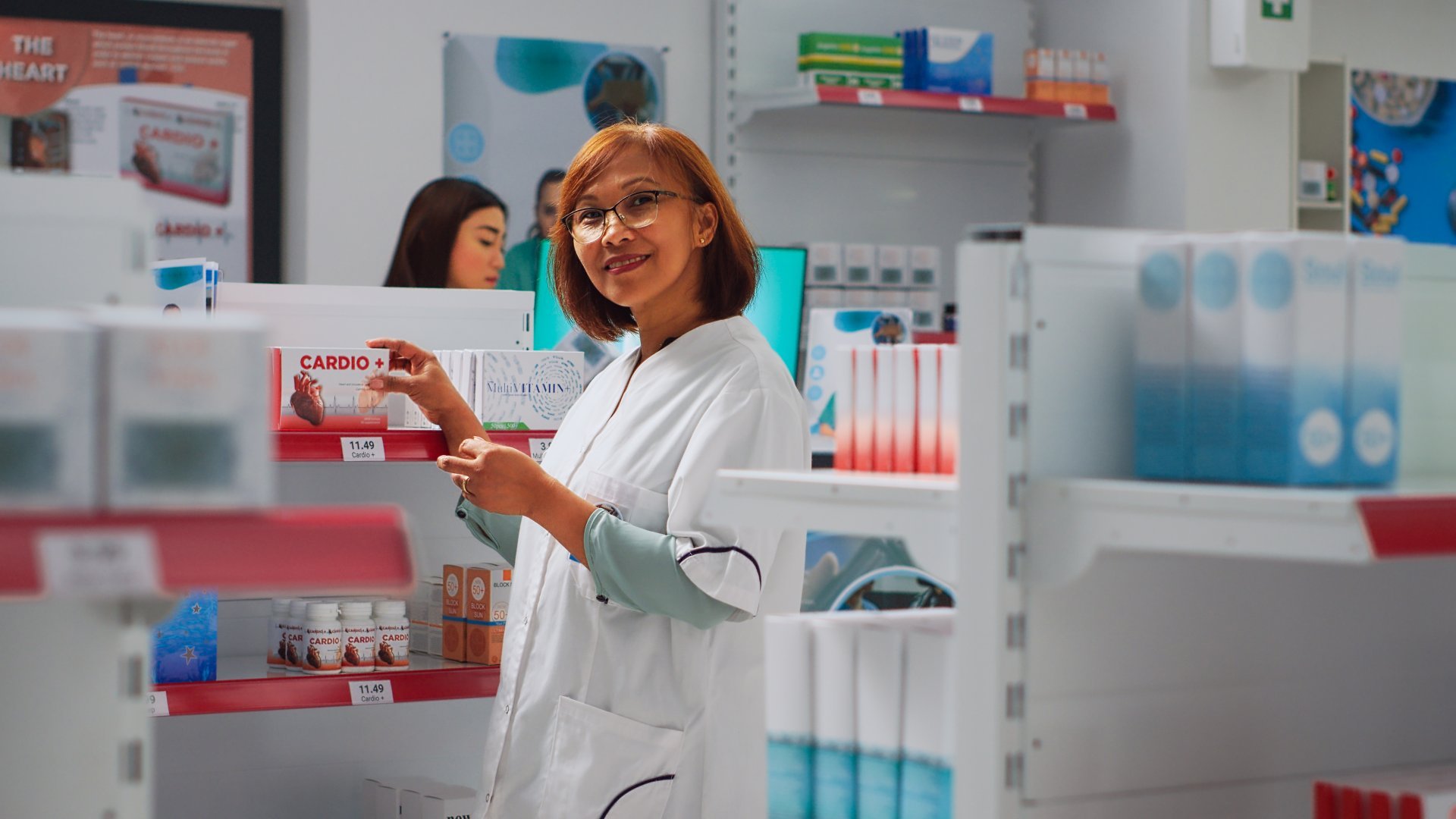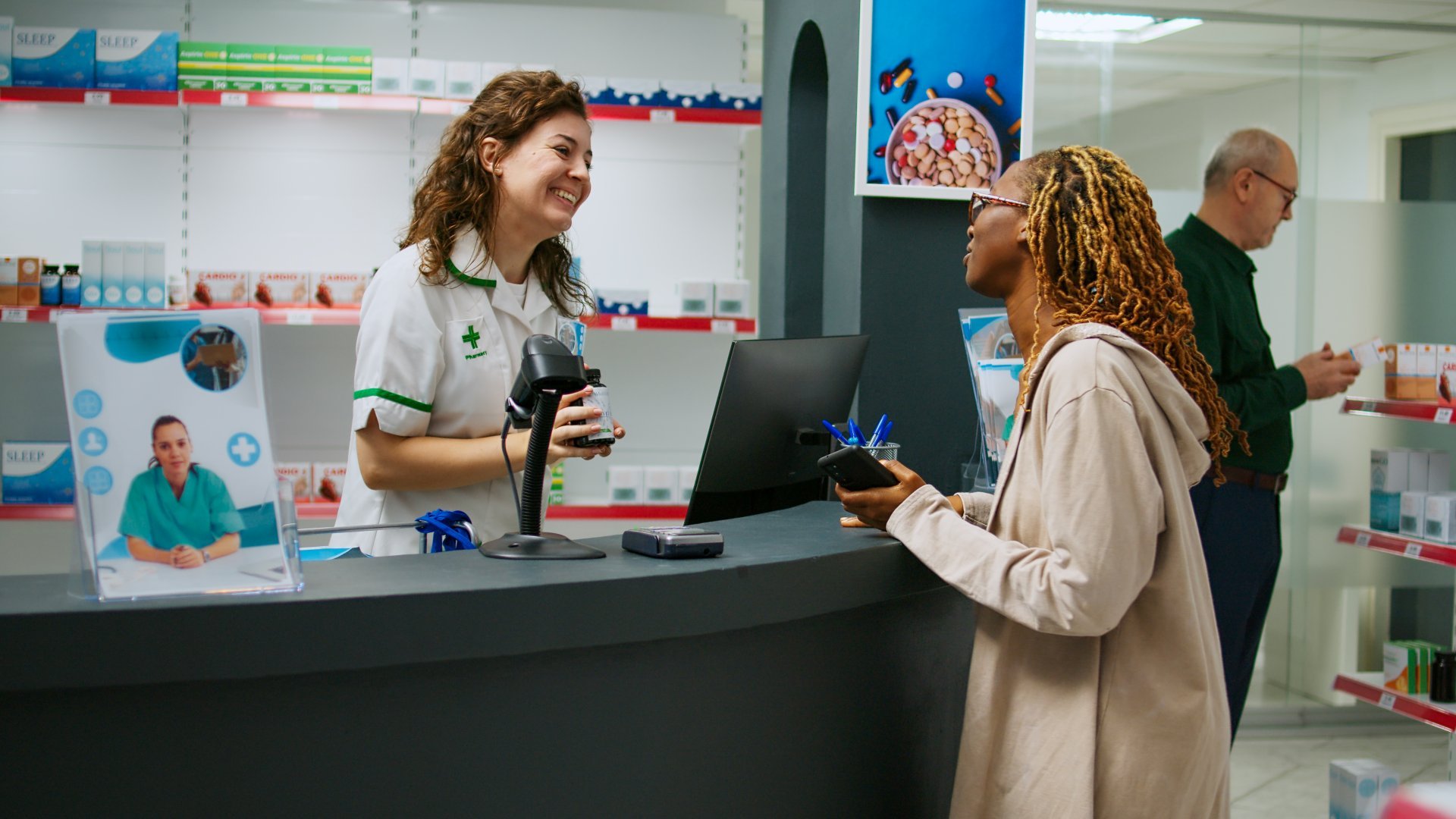Pharmacy technicians and pharmacists each play a role in the day-to-day operations of a smooth-running pharmacy.
While it may be difficult to tell who is who—especially when they all wear white lab coats—understanding the different roles and responsibilities of each is essential for those in a career in pharmacy or wanting to understand the inner workings of a pharmacy team.
Pharmacy technicians and pharmacists work closely together to deliver patient care and improve well-being, and both are crucial for pharmacy operations. Yet, they have distinct responsibilities and qualifications.

Pharmacy technician education and training
Pharmacy technicians generally need a high school diploma or an equivalent qualification. Many technicians opt for training programs or certifications offered by schools, community colleges, or pharmacy associations. These programs cover pharmacy practices, dispensing medications, pharmaceutical calculations, and pharmacy law and ethics.
The requirements can vary depending on the state or country. National institutions, like the Pharmacy Technician Certification Board (PTCB) and the National Healthcareer Association (NHA), offer guidelines for qualifications that states can follow. Ultimately, states have the power to set regulations for certification and training, so be sure to check the requirements for where you live and plan to work.
Many states, however, require pharmacy technicians to pass the Pharmacy Technician Certification Exam (PTCE), a standardized test governed by The Pharmacy Technician Certification Board (PTCB). They must also earn 10 hours of continuing education credits every two years to maintain their certification.
To advance in their careers after gaining experience in a working pharmacy, technicians can earn additional certifications or specialize in a particular area, such as pharmaceutical compounding or health informatics. They can also opt to become pharmacists by earning their degree while working in the pharmacy Read one to learn more about pharmacists’ education and training.
Pharmacy technician roles and responsibilities
Pharmacy technicians support pharmacies by assisting pharmacists with tasks to keep the pharmacy running smoothly. They handle many office tasks, in addition to dealing directly with patients and helping to prepare prescriptions. Their primary duties include:
- Dispensing medication. They typically dispense prescription medications, which involves counting, measuring, and packaging them based on prescription orders.
- Customer service. They are often the face of the pharmacy. It’s typically the technician who answers patient questions, helps sort out the best over-the-counter medications for your symptoms, and can look up prescription status and deal with insurance companies.
- Inventory management. Pharmacy technicians also restock pharmacy shelves, order refills on regulated medications and supplies, and safely store pharmaceuticals.
- Administrative tasks. They may also carry out responsibilities such as processing insurance claims, maintaining records, and overseeing prescription databases.
Pharmacist education and training
Pharmacists undergo a more structured and advanced education than pharmacy technicians, which looks much like a more traditional post-secondary school education (i.e., heading off to college). Becoming a pharmacist starts with a bachelor’s degree in, typically, a science-related discipline such as biology or chemistry and ends with a PharmD (Doctor of Pharmacy) degree. They must also study for and pass the North American Pharmacist Licensure Exam (NAPLEX) to practice anywhere in the United States.
After that, pharmacists have career growth opportunities through specialization in ambulatory care, oncology, or psychiatric pharmacy. They must also earn 30 hours of continuing education credits every two years.

Pharmacist roles and responsibilities
Pharmacists are trained healthcare professionals who play a role in ensuring the safe and effective use of medications. They have a range of responsibilities, including medication therapy management and direct patient care, whereas pharmacy technicians mainly assist with medication dispensing and administrative tasks. Their responsibilities go beyond dispensing medications to include:
- Drug information expertise. Pharmacists are experts in specific prescription drug information. They can address questions from healthcare providers and patients about medication dosages, interactions, and alternative treatments.
- Medication management. Pharmacists carefully review prescription orders for accuracy, safety, and interactions with other medications. They also consult with patients on medication usage when questions arise, and want them of potential side effects. They also work directly with healthcare providers to improve clinical outcomes based on the medications the clinician prescribed and what the pharmacist has learned about their effectiveness.
- Clinical services. Many pharmacies might offer services like medication vaccinations and health screenings. When they do, it’s typically the pharmacist who delivers these services.
- Quality assurance. Pharmacists supervise pharmacy operations, including pharmacy technicians, to ensure compliance with regulations, the use of best practices in health and safety, and the efficient operation of the pharmacy.
Prolink can help find your next pharmacy role
Both pharmacy technicians and pharmacists have essential but distinct roles in ensuring that patients are safely and effectively using medications. If the idea of working in a pharmacy appeals to you, it’s good to understand each position's requirements and responsibilities to help determine which option is the best for you.
Prolink can help you find the perfect pharmacy job at any level. Partner with Prolink and search for your ideal pharmacist or pharmacy technician job today.









